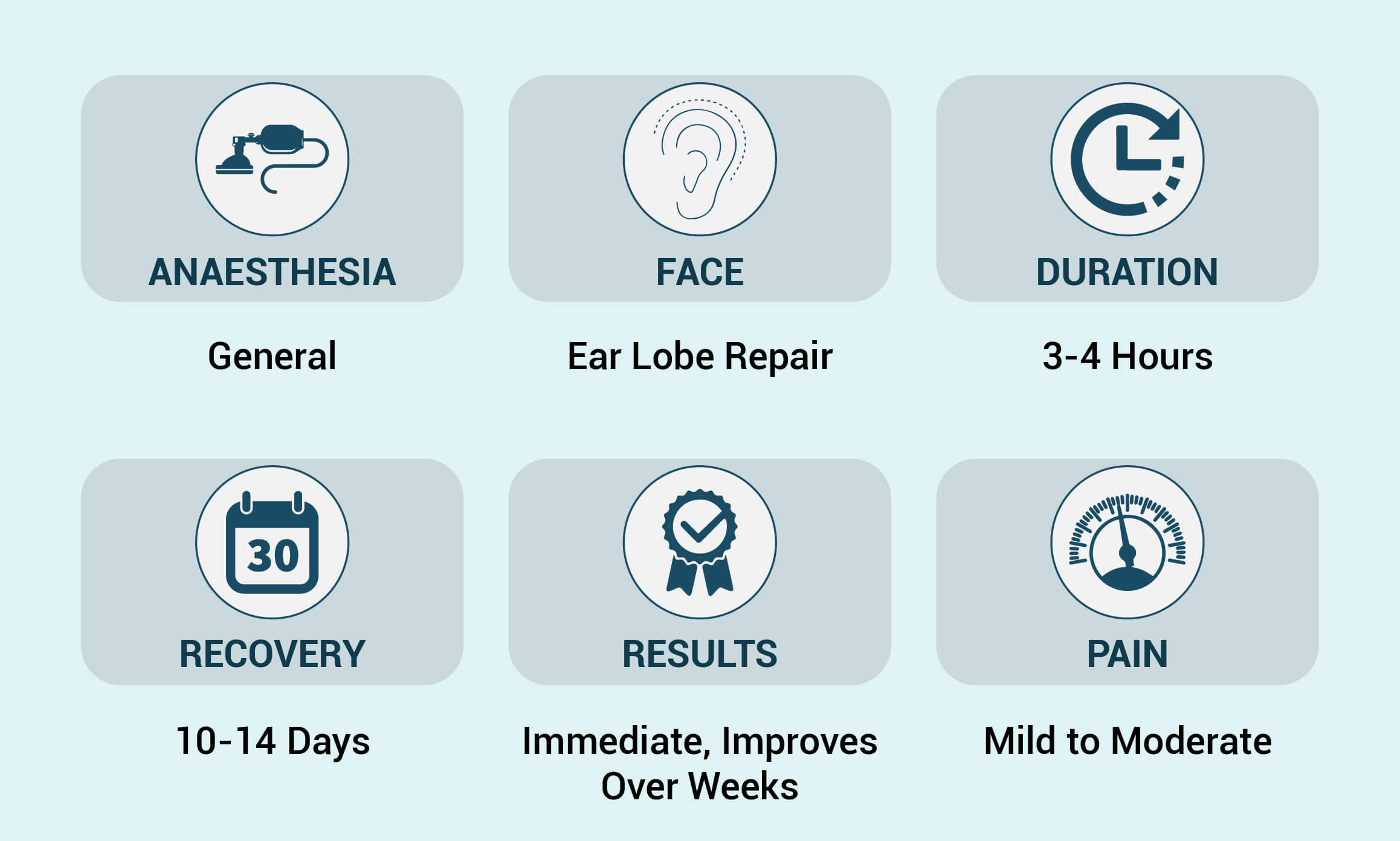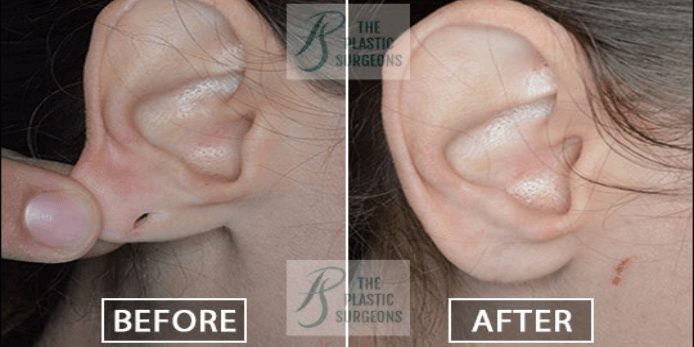Comestic Surgeon for Ear Hole Repair in mumbai1
Auroplasty or Earlobe hole/tear repair is a very commonly sought surgical procedure used to repair the earlobe. Many ladies at times resort to a quick-fix, using chemicals to seal the enlarged earlobe hole. However, this can damage the tissues and is not recommended at all.
Auroplasty or Earlobe hole/tear repair is a very commonly sought surgical procedure used to repair the earlobe. Many ladies at times resort to a quick-fix, using chemicals to seal the enlarged earlobe hole. However, this can damage the tissues and is not recommended at all.
The doctors specialize in the specialized flap closure technique of earlobe hole/tear repair and ensure that you go back home with an earring in place after the surgery.


Why you may need an Earlobe Repair
There are several reasons why you might consider repairing your earlobes
1.An Earlobe torn
2.The hole in the ear piercing has been widened
3.An earlobe that has been split
By closing or narrowing the widened ear piercing hole, you can once again wear your favorite earrings.
Ear lobe repair Procedure
Ear lobe repair is a surgical procedure that aims to restore the shape, symmetry, and integrity of stretched or damaged earlobes. Ear lobe repair can help rejuvenate the appearance of the earlobes, whether caused by trauma, aging, or elongation from heavy earrings.
Here are the steps involved in the ear lobe repair procedure:
Consultation: During the consultation, the surgeon will examine your earlobe and provide you with detailed information about the procedure.
Anesthesia: Before the procedure, the surgeon will provide a local anesthetic to numb the earlobe region. This will guarantee your comfort during the procedure.
Incision: Once the earlobe is numb, the surgeon will carefully make an incision along the damaged or stretched area of the earlobe.
Tissue removal: During the procedure, the surgeon will eliminate any extra tissue or stretched parts of the earlobe to achieve a precise and clear-cut contour.
Suturing: If necessary, the surgeon will suture any torn or split earlobe tissue with dissolvable sutures. This will help to restore the shape and symmetry of the earlobe.
Bandaging: A sterile dressing or bandage may be applied to the earlobe after the procedure to protect the area and promote healing.
Recovery: The recovery typically takes a few weeks. During this time, the earlobe should be kept clean and free from excessive pressure or tension. The surgeon will provide specific post-operative care instructions to ensure optimal healing.
Overall, the ear lobe repair procedure is a straightforward and relatively simple process that can help rejuvenate the appearance of the earlobe and restore its symmetry and shape. If you are considering ear lobe repair, it is essential to consult with a qualified plastic surgeon who can guide you through the process and ensure the best possible outcome.
How long is recovery for earlobe repair?
1.Recovery time for earlobe repair varies based on the procedure extent and individual healing factors.
2.After the process, patients should expect: Mild discomfort, Swelling, Bruising around the surgical site
3.Most patients can resume work and normal activities within a few days to a week after the procedure.
4.It is crucial to follow all post-operative instructions for proper healing and to minimize complications.
5.If you have concerns or need additional information, consult your plastic surgeon.
Ear Lobe Repair post-treatment guidelines
After undergoing earlobe repair, it's essential to follow these post-treatment guidelines:
1.Keep the area clean: Gently clean the repaired earlobe twice a day using mild soap and water. Avoid using harsh chemicals or rubbing the area vigorously.
2.Apply antibiotic ointment: Follow your surgeon's instructions on applying an antibiotic ointment to the earlobe. This helps prevent infection and promotes healing.
3.Avoid excessive pressure or trauma on the repaired earlobe.
4.Avoid swimming and excessive moisture.
5.Avoid wearing earrings initially.
6.Protect the earlobe from the sun.
7.Attend follow-up appointments
Ear Lobe Repair Benefits
1.Earlobe repair is restoring a more youthful and symmetrical appearance to the earlobes.
2.The procedure improves the overall balance and proportion of the face. After the earlobe has healed, patients can wear earrings without fear of the earlobe tearing or elongating.
3.Earlobe repair is a simple procedure that can be done in a plastic surgeon's office under local anesthesia.
4.The recovery time is short; most patients can return to work and normal activities within a few days to a week.
Is earlobe surgery safe?
Earlobe surgery, also known as earlobe repair or reduction, is generally considered a safe procedure when performed by a qualified and experienced plastic surgeon. However, as with any surgical procedure, there are risks and complications.
Infection, bleeding, scarring, asymmetry, and changes in sensation are some risks associated with earlobe surgery. In rare cases, patients may also experience complications such as excessive swelling, numbness, or skin necrosis.
It's important to note that the risks of earlobe surgery can be reduced by selecting a skilled and experienced plastic surgeon, carefully following all pre-and post-operative instructions, and disclosing any relevant medical history or medications to the surgeon.
It is important to speak with your surgeon about the post-treatment instructions specific to your situation. The guidelines for earlobe repair procedures can vary, so it is best to get personalized advice from your surgeon.
How can I Fix My Earlobe Without Surgery?
Dermal fillers are injected into the earlobe to plump and add volume. This can help to improve the appearance of an earlobe that has been torn or stretched.
However, the treatment is only temporary and does not produce the dramatic results that earlobe repair surgery does.
 WhatsApp
WhatsApp